No country can ignore its heroes or legendary personalities, who shaped its destiny. Sardar Vallabhbhai Patel was one such iconic hero who shaped India's destiny in a far-reaching way and with single-minded devotion. Soon after attaining Independence, he fashioned the country's political integration with the swiftness of a military commander and deftness of a visionary leader.
Present-day India owes immeasurable gratitude to the vision, tact, diplomacy and pragmatic approach of Sardar Patel in preventing the Balkanization of the country and enabling the merger of more than 560 princely states with the Union of India in the wake of the partition of the country. What makes this stupendous integration most remarkable is that it was achieved without any bloodshed.
Adopting different approaches as warranted by the situation, he gave friendly advice in some cases, persuaded the rulers to see reason in others and even used force as in the case of Hyderabad. When one looks back after so many years, what strikes us as remarkable is the fact that Sardar Patel achieved a unified India at a time when the rulers of the princely states were given the option to join either India or Pakistan or remain independent.
Soon after Independence, the Nizam of Hyderabad nurtured ambitions to remain independent and issued a 'firman' to this effect. At the same time, he let loose the Razaakars (a private militia) and even toyed with the idea of merging Hyderabad with Pakistan, although there was no geographical continuity. Similarly, Travancore declared that it would remain independent and the Nawab of Junagarh announced accession to Pakistan.
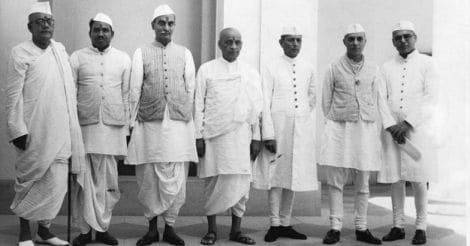 Members of the first intrim government outside the council room in the Vicerory's House, New Delhi, shortly before their swearing-in ceremony. (Left to right) Sarat Chandra Bose, Jagjivan Ram, Dr. Rajendra Prasad, Sardar Vallabhbhai Patel, Asaf Ali, Pandit Jawaharlal Nehru, Syed Ali Zahee. Photo: Hulton-Deutsch Collection/Corbis via Getty Images
Members of the first intrim government outside the council room in the Vicerory's House, New Delhi, shortly before their swearing-in ceremony. (Left to right) Sarat Chandra Bose, Jagjivan Ram, Dr. Rajendra Prasad, Sardar Vallabhbhai Patel, Asaf Ali, Pandit Jawaharlal Nehru, Syed Ali Zahee. Photo: Hulton-Deutsch Collection/Corbis via Getty ImagesAfter securing the accession of Junagarh, in a deft and swift action codenamed 'Operation Polo', Hyderabad was integrated with the rest of India in just four days. The popularly described 'police action' to liberate and integrate Hyderabad commenced on September 13 and ended on September 17, 1948. Every year, September 17 is being celebrated as 'Hyderabad Liberation Day' by many sections in Hyderabad and in some areas of Maharashtra and Karnataka, which were parts of the erstwhile Hyderabad State.
In a truly masterful display of statesmanship, Sardar Patel ensured a smooth integration of the troubled domains by not allowing the situation to deteriorate into civil unrest. There was neither bloodshed nor any kind of rebellion as he went about the task of building a strong India with a missionary zeal.
After he was made in-charge of the States Department, he emphasized that 'the safety and preservation of these States as well as of India demand unity and mutual cooperation between its different parts… By common endeavor we can raise the country to a new greatness while lack of unity will expose us to fresh calamities,' he cautioned.
Undoubtedly, Sardar Patel was the greatest unifier of India. Perhaps, there is no parallel in modern history to what was achieved by him. Acknowledging the monumental contribution of Sardar Patel in nation building, Pandit Jawaharlal Nehru had this to say: "History will call him the builder and consolidator of new India."
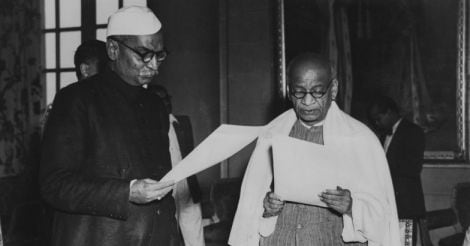 Then Indian president Rajendra Prasad (left) swearing in cabinet minister Sardar Vallabhbhai Patel as India becomes a republic, January 30th 1950. Photo: Fox Photos/Hulton Archive/Getty Images
Then Indian president Rajendra Prasad (left) swearing in cabinet minister Sardar Vallabhbhai Patel as India becomes a republic, January 30th 1950. Photo: Fox Photos/Hulton Archive/Getty ImagesHis biggest asset was his down-to-earth disposition. He exemplified what the Father of the Nation had said about leadership: "I suppose leadership at one time meant muscles: but today it means getting along with people."
After returning to India on completion of his barrister study in England, Sardar Patel gradually gravitated towards Mahatma Gandhi's unique non-violent campaign against the British rule. He became his lieutenant and was chosen by Gandhiji to lead the Kheda campaign.
"Many were prepared to follow me, but I could not make up my mind as to who should be my deputy commander. Then I thought of Vallabhbhai," said Gandhiji. The trust reposed in Patel by Gandhiji did not prove to be misplaced and Sardar Patel not only became an organizer par excellence but also turned out to be a people's leader. He earned the title 'Sardar' after he spearheaded the peasant's no-tax campaign in Bardoli, Gujarat. He also led the relief and rehabilitation operations from the front when Gujarat was ravaged by floods and worked tirelessly during the plague outbreak in Ahmedabad.
His vision for a unified India also saw the creation of the all-India Administrative Services which he described as the 'Steel Frame.' In his address to the probationers, he asked them to be guided by a real spirit of service in their day-to-day administration and reminded them of the saying regarding the civil service that it was neither Indian, nor civil, nor imbued with any spirit of service.
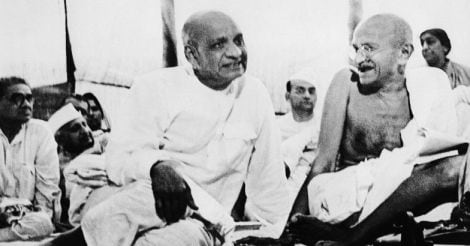 Mahatma Gandhi with Sardar Vallabhbhai Patel. Getty Images
Mahatma Gandhi with Sardar Vallabhbhai Patel. Getty ImagesHis exhortation to the probationers to maintain utmost impartiality and incorruptibility of administration is as relevant today as it was then. "A civil servant cannot afford to, and must not, take part in politics. Nor must he involve himself in communal wrangles. To depart from the path of rectitude in either of these respects is to debase public service and to lower its dignity," he had cautioned them on April 21, 1947.
The remarks he made during the Quit India Movement are ever more relevant today. He said, "We have to shed mutual bickering, shed the difference of being high or low and develop the sense of equality and banish untouchability… We have to live like the children of the same father."
After he passed away, The Manchester Guardian quite aptly commented on the all-important role played by him during the freedom struggle and subsequent to attaining Independence: "Patel was not only the organizer of the fight for freedom but also the architect of the new State when the fight was over. The same man is seldom successful as a rebel and a statesman. Sardar Patel was the exception."
It is unfortunate that there has been no proper recognition of the monumental contribution made by Sardar Patel and his legacy in unifying the country at its most critical juncture in history.
Finally, I would like to conclude by stressing that the invaluable contribution of Sardar Patel in building a modern and unified India needs to be remembered by every Indian as the country marches ahead as one of the largest economies in the world.
























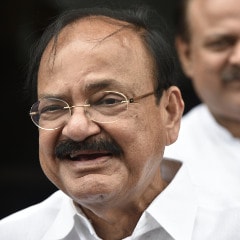
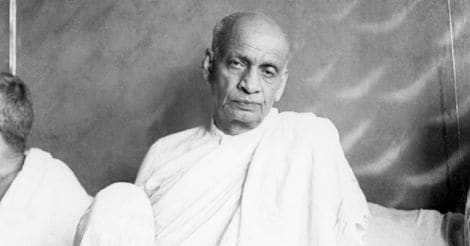 Sardar Vallabhbhai Patel (1875 - 1950). Photo: Dinodia Photos/Getty Images
Sardar Vallabhbhai Patel (1875 - 1950). Photo: Dinodia Photos/Getty Images